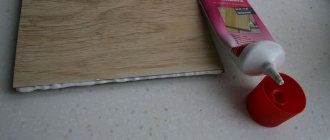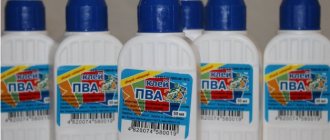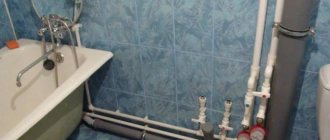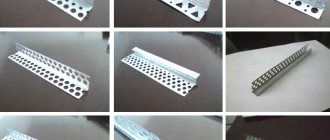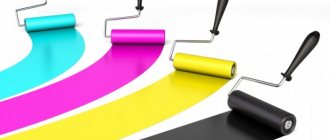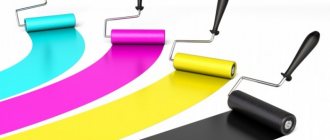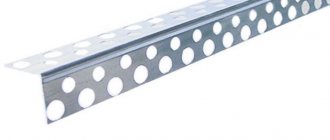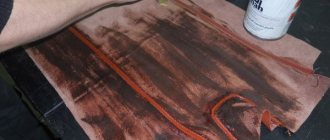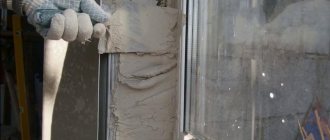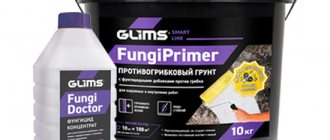The windshield of a car is its most vulnerable point. A stone flying out from under the wheel of a vehicle in front or someone’s unkind trick can lead to a forced replacement of a part. In repair shops, the service is quite popular, but you will need to shell out a lot of money.
However, you can do this yourself; for this it is important to be able to choose the right adhesive-sealant for gluing car windows. Today, the market offers a large selection of products that allow you to remove microcracks, deep chips and scratches, which can subsequently lead to complete destruction of the windshield; we will talk about them in another article. But if the windshield cannot be repaired and you decide to replace it yourself, then for this you should study in more detail the types of glue, suitable brands and how to do it.
Purpose and main characteristics of sealants
Glass sealants are used for installing or repairing glass, as well as headlights and decorative elements. They are used where it is impossible to attach the part in any other way, and the finished seam will not be afraid of vibration, temperature changes and contact with moisture. The main task of the compositions is to firmly connect the parts and seal the joints so that moisture and air do not penetrate into the interior. This is a prerequisite for safe driving: when condensation appears, the view of the road is greatly impaired.
Car windshield replacement
A good glass sealant is characterized by the following properties and technical parameters:
- time until polymerization is completed - 1-24 hours;
- the approximate period before the initial setting of the composition is from 15 minutes, until a durable film is formed - up to 30 minutes;
- density - 102-1.35 g/cubic. cm;
- operating temperature - from –40 to +90 degrees;
- shrinkage - no more than 1%;
- consistency - thick, pasty;
- elasticity - high;
- Possibility of application on old sealant.
With the help of a suitable composition, you can glue the glass yourself in a minimum period of time and start using the machine on the same day.
Reasons for optics failure
Modern car optics consists of a plastic body and a transparent front cover made of glass or polymer.
A crack in the glass is the result of a stone hitting you while driving on the highway. They appear due to an accident or mechanical impact. If a defect is detected, you need to seal the area with transparent tape. This will protect the internal parts from penetration of moisture, dust, and sand. If a plastic headlight is cracked, you need to turn off the light bulb or not use the light. Heating will deform the part, and it will be impossible to restore its original appearance. A defect in a plastic headlight appears due to a sudden temperature change, impact or strong pressure on the mask.
Breakage of headlight mounts is caused by abruptly closing the hood with a forgotten tool on the optics housing or when ice freezes in winter. The retaining tendrils can be torn off by a person leaning against a car or by an accident.
Types of automotive glass adhesive
Not every composition from the first store you come across is suitable as a glass glue-sealant. For example, ordinary superglues are not suitable for this purpose - they do not have the required degree of elasticity, so the seam will quickly deteriorate from regular vibration. To eliminate damage to glass, you should also choose a special glue that:
- will not cause a decrease in glass transparency;
- eliminates the appearance of unsightly spots;
- will “freeze” the crack, preventing its expansion and spreading.
A good sealant for auto glass is able to accommodate vibrating substrates, which, in addition, are constantly exposed to ultraviolet radiation, detergents, moisture, wind, and temperature changes. There are different types of glue, selected by users depending on the problem encountered.
For glass installation
Glass bonding compounds have replaced outdated rubber gaskets. Typically, such products are prepared on a polyurethane basis, so the structure will be completely sealed, while the seam will remain elastic. Safety for passengers is maximum - even in an accident, the glass will not fly out.
Sealants may also have a different base - other artificial resins, silicone (rubber). In any case, before purchasing, you need to make sure that they are suitable for working with glass, and also purchase a primer to enhance the adhesion of dissimilar surfaces and improve the protection of the seam from ultraviolet radiation. The electrical conductivity of the sealant should be low or absent so that the car owner does not suffer from static electricity.
To eliminate defects on glass
Repair (optical) sealant is an automotive product that allows you to seal a crack or repair a chip on a windshield or other glass. After hardening, the seam formed by it follows the structure of the base, so the sealant is almost invisible. The main properties of such a product are given below:
- high degree of transparency after polymerization;
- good fluidity, rapid penetration into even the smallest defects;
- resistance to moisture, ultraviolet radiation;
- no stains, darkening or yellowing over time.
Typically, sealants for auto glass repair are sold complete with the necessary accessories - tape, a blade, a needle for cleaning dirt from the crack, and a degreaser. Using such tools is not difficult, and repairs can be done with your own hands.
Device for working with cards
Of course, the most reliable device for carrying out any manipulations and the most convenient, from the point of view of using special software (control programs), is a PC or laptop.
In this case, the intermediate link for communicating with memory cards from it is a card reader, which perceives SD or microSD as a simple flash drive.
When using to format cards, a tablet or a smartphone, first (before purchasing a card reader) you need to make sure that they do not have such a function using any of the applications or file managers.
In the absence of such an opportunity, all that remains is a PC and a card reader.
Types of card readers
Devices for reading/writing data on SD cards are card readers (the names card reader and card reader from Card reader are also used).
Card readers can be built-in - then they are already integrated into the assembly of the computer device as a separate module. Currently, many models of laptops and all-in-one computers are equipped with them.
In this regard, carefully inspect your model to see if it has the required SD port. Often on a PC, a slot can be found in a compartment previously intended for floppy drives.
External card readers are separate gadgets that are most often connected to a PC via a USB port.
Now these are inexpensive devices; Chinese models can be found anywhere in computer or mobile equipment.
Types of automotive sealants
To avoid the penetration of dirt, water, and air into the car interior, you need to buy only the highest quality sealant when gluing or repairing glass. Depending on the composition, there are different types of products.
Silicone
Such products are created on the basis of artificial rubber (silicone), therefore they are highly elastic and are not afraid of vibration. After hardening, the sealants form a durable rubber-like gasket. They reliably seal windshields and other glass, and are also suitable for repairing windows and skylights.
Most often, silicone sealants are used to seal cracks up to 4-6 mm deep. They are liquid, fluid, and penetrate even the smallest gaps. The sealed seam can be heated up to +250 degrees without damage or reduction in performance characteristics. The disadvantage of the compositions is their poor resistance to oils and alkalis.
Highly fluid agents are used to repair chips
Polyurethane
The adhesion to surfaces of such products is even higher than that of silicone sealants. They are made on the basis of polymers of the urethane group - resins of synthetic origin, due to which they have excellent elasticity, do not crack from vibration, and are not afraid of mechanical damage. Polyurethane sealants also boast the following properties:
- resistance to moisture, ultraviolet radiation, chemicals;
- no harm to metals (do not cause corrosion);
- fast curing;
- optimal consistency, sufficient fluidity;
- high tensile strength.
The disadvantage of a number of one-component polyurethane sealants is their maximum operating temperature - it is up to +100 degrees. Two-component formulations tolerate higher temperatures.
Anaerobic
Sealants that harden in an airless environment tend to retain their plasticity in air for a long time. This makes it easy to work with them even without the knowledge of gluing car glass. After curing, the anaerobic composition is transformed into a durable plastic-like substance that does not expand or dry out during use, and retains its properties at temperatures ranging from –50 to +175 degrees.
Heat resistant
Such sealants are extremely resistant to high temperatures - they can easily withstand heating up to +375 degrees. In addition, heat-resistant sealants do not deteriorate from the influence of vibration, loads, chemicals and ultraviolet radiation. They are usually sold in the form of pastes, powders or aerosols. The first two options require the presence of a hardener (they are two-component) and before use they must be diluted in a certain proportion.
Main features
Glass auto sealants differ greatly both in chemical composition and characteristics, but are united in the main thing:
- Elasticity, which should provide sufficient flexibility and extensibility so that large temperature changes and vibration do not lead to destruction or delamination of the adhesive layer. This is especially true for gluing car windows, since the window and frame have a large difference in temperature expansion.
- Strength, which should ensure that the adhesive will withstand aggressive influences and time. This parameter directly depends on the consistency of the sealant: the denser the glue, the less shrinkage it gives when curing and a more reliable layer.
- Adhesion, or stickiness, is an important parameter because It is not always possible to provide a wide seam strip. It is the “tenacity” of the sealant that guarantees that the sealant layer will not move away from the base after long-term use.
- Electrical conductivity, which is important if electrical contact is to be made. There is a lot of static electricity generated when the car is moving, so it is very important that the windshield adhesive ensures that this stress is removed from the body parts.
Incorrect selection of sealant often leads to a decrease in the quality of the connection, as well as to a decrease in the transparency of the glass, the appearance of unaesthetic sagging and even cracking.
Rules for choosing glue for glass repair
If the composition is selected for automobile glass, it should not just mask defects, but fill them, while “eating” into the surface. The sealant must show optimal elasticity, shock-absorbing ability and resistance to vibration. You should not choose products that dry literally in minutes - the longer the polymerization process lasts, the more reliable the finished seam will be. In addition, quickly crystallizing compositions are difficult to work with, and it will be difficult to cope with them without skill.
To glue car glass, you need to choose a sealant of higher density - compositions that are too fluid are inconvenient to work with and are more suitable for sealing cracks. When purchasing a material, you should also take into account the indicators of elasticity, resistance to mechanical loads and deformations, vibration and shear. High-quality sealant does not fade or turn yellow from exposure to sunlight, and does not deteriorate from humidity or direct and regular contact with water.
Replacing rear shock absorber Ford Focus 2
If oil stains appear in the area of the rear shock absorber rod, and the car begins to drive over bumps with the rear part of the body swaying, the shock absorber has failed and needs to be replaced. We carry out the work as follows:
- for convenience, remove the rear wheel;
- We place a support under the rear suspension (for example, an old unnecessary wheel rim), and lower the car a little on the jack - you need to make sure that the suspension spring is compressed somewhat;
- this is done so that when the shock absorber is removed, the spring does not straighten without load and shoot upward;
- unscrew the bottom bolt that holds the shock absorber, for this you will need a wrench with a 15mm head;
- from the body (inside the wheel arch) unscrew the two bolts securing the shock absorber support to the body; here you will need a 10 mm socket wrench or a socket with an extension and a wrench;
- We dismantle the part to be replaced, install a new shock absorber in place, and carry out the assembly.
Advantages of adhesive sealant
A good sealant is ideal for base materials (glass, plastic, metal) and does not cause damage. It also has a number of other advantages:
- plasticity - under the influence of temperature changes, the glass location parameters can change, and the sealant can easily adapt to them without losing its integrity;
- elasticity - the seam absorbs some of the vibration and shock loads, smoothes out sharp “jumps” of the car while driving, ensuring safety for the glass elements of the car;
- optimal curing speed - the owner does not have to wait several days to start using the machine again - usually the sealant takes less than a day to completely polymerize;
- ease and convenience of work - even a novice craftsman can glue the glass if the instructions are strictly followed.
see also
Glass polish
- 6 0 14k
Sealant for headlights
- 9 0 23k
Tire bead sealant
- 23 0 28k
Anti-fog for car windows
- 4 0 11k
Glass closers
- 41 0 48k
Sealant for car glass not only reliably attaches the glass to the car body in a wide variety of operating conditions, but also ensures normal visibility, prevents the penetration of moisture into the interior at the fastening points, and also provides elasticity between the glass and the frame, which is necessary in conditions of vibration and/or deformation of racks.
Sealants for automobile glass are divided into two main groups - repair and installation. Repair ones are divided into five main categories - balsam, balsam, balsam M, ultraviolet and acrylic adhesives. In turn, adhesive (mounting) compositions are divided into four groups - quick-acting polyurethane, one-component polyurethane, silicone and adhesive-sealants. Each product belonging to a particular group has individual properties, so before you buy a sealant for gluing glass, you need to understand their purpose and where exactly they can be used. The rating of the best sealants will help you make your choice.
| The name of the most popular product from the line | Brief information and description | Package volume, ml/mg | Price of one package as of summer 2022, Russian rubles |
| Abro 3200 Flowable Silicone Sealant | Penetrating silicone sealant for glass repair. Operating temperature - from -65°C to +205°C. Can be used to seal headlights and sunroofs. Complete polymerization occurs after 24 hours. | 85 | 180 |
| Teroson Terostat 8597 HMLC | A sealant that can be applied to the body of a vehicle where windshields are subject to loads. Excellent sealing and other protection. The only drawback is the high price. | 310 | 1500 |
| Done Deal DD6870 | Universal, soft, transparent sealant. Can be used with a wide variety of materials in the vehicle. Operating temperature - from -45°C to +105°C. It is distinguished by quality and low price. | 82 | 330 |
| Liqui Moly Liquifast 1402 | Positioned as an adhesive for gluing glass. Requires preliminary surface preparation. High quality sealant, but it has a high price. | 310 | 1200 |
| SikaTack Drive | Quick-hardening adhesive-sealant. Polymerizes within 2 hours. Vulnerable to fuel and oils. Performance characteristics are average. | 310; 600. | 520; 750. |
| Merbenit SK212 | Elastic one-component adhesive-sealant. Very durable, resistant to vibration and shock. protects against corrosion. Has a high price. | 290; 600. | 730; 1300. |
Which sealant is better
When choosing a product, you should pay attention not only to its parameters, but also to the popularity of the brand: it is not recommended to buy the cheapest, untested formulations.
SikaTack Drive
A distinctive characteristic of the sealant is its suitability for any glass of trucks and cars. The product is available in 310 ml tubes, used without preheating at temperatures of about +20...+22 degrees, hardens in 4 hours.
3M Windo Weld SuperFast Urethane
The sealant does not require the use of a primer, since it itself is quite durable and is not afraid of ultraviolet radiation. It can even be used on the windows of racing cars and vehicles that are often driven off-road. After application, the product begins to set in 15 minutes, complete crystallization occurs in 8 hours.
Dow Automotive Betaseal 1527
The set of accessories for making a sealing seam includes a primer - it is mandatory for use with this composition. The product has the following properties:
- low electrical conductivity;
- initial setting in 12 minutes;
- highest strength;
- suitability for all types of transport;
- Possibility of application at +5 degrees and above.
After gluing the glass, you can use the machine within an hour (in emergency situations), so the product is considered one of the fastest-drying glass adhesives.
Dow Corning 7091
This silicone-based composition is widely used when replacing glass, since it has excellent adhesion to metal and plastic, is characterized by high elasticity, strength, and works at –55...+185 degrees. Typically, white sealant is used for glass installation, although black and gray products are also available for sale.
The composition of this brand is available in a standard 310 ml tube, as well as in 20 liter and 250 kg cans (for industrial use). It hardens in 3 hours and does not require priming or heating during application.
3M PU 590
The product is considered universal, suitable for working with a variety of surfaces - glass, metal, wood, plastics. It sets in 25 minutes, dries completely in 4-8 hours, and does not require the use of a primer. The disadvantages include the risk of cracks and crumbling when heated above +100 degrees.
Abro WS 904
A sealant under this name is highly valued by professionals and is considered one of the leaders on the market. Sold in the form of a rolled tape, it is easy to use, does not stick to your hands, and has a high degree of adhesion and plasticity.
Donedeal DD6870
The product has a high degree of transparency, is invisible on glass, and can be used to repair other parts of the car. The characteristics of the sealant are as follows:
- temperature during operation - from +5 to +30 degrees, temperature range during operation -45...+105 degrees;
- connection strength - 195 kg/sq. cm;
- initial setting time - 1 hour, period until complete polymerization - 24 hours.
The sealant is well suited for gluing materials with different coefficients of thermal expansion - plastic, glass, plexiglass, rubber, metal. It does not deteriorate from vibration, mechanical stress and the action of chemicals.
"Efimastica RV"
A one-component polyurethane sealant is used in conjunction with the primer that comes with the kit. It forms a very strong connection between glass and metal, plastic, and completely hardens within 24 hours, although it forms the initial film in 30 minutes. The seam can be used at temperatures from –40 to +80 degrees and has high tensile strength (6 MPa).
Teroson PU 8590
This sealant is also prepared on the basis of polyurethane and is widely used for gluing auto glass not only in passenger cars, but also in trucks, buses, and railway cars. Requires prior application of primer. It sets in half an hour, dries in 4-6 hours. It is UV resistant, wear-resistant, and holds the glass securely immediately after insertion.
Merbenit SK212
The product based on modern MS polymers boasts the highest tensile strength and is even used in shipbuilding. The sealant does not need a primer or heating, it is resistant to vibration, loads, ultraviolet radiation, protects the metal from corrosion, and can be painted even in a semi-hardened form.
Liqui Moly Liqui Fast 1400
Polyurethane sealant of this brand is used for gluing any car glass; it cures in a short time under the influence of moisture. It has good elasticity, elasticity and strength.
Rules for gluing the windshield
The whole procedure fits into several interconnected stages. The final result depends on consistency and accuracy. So this is:
- Removing old glass. At the same time, seals and decorative inserts are removed. A sharp knife or piece of wire is used and inserted into the seam.
- Next, the contact areas of the new window panel and the corresponding body components are cleaned. If damage to the paint layer is detected, they are restored.
- If according to technology the adhesive is applied at a certain temperature, this condition must be met.
- All that remains is to carefully distribute the glue (create a bead) on the glass or in the body recess, and then glue the glass to the composition.
Removing old sealant
The old seal is removed mechanically using a sharp knife. Then the surfaces are cleaned of dust, dirt, degreased, and prepared for glass installation
It is very important that no fragments remain, otherwise obtaining a high-quality adhesive seam is not guaranteed.
How long does it take to dry?
The setting time of the adhesive depends on the specific brand of the composition, the design of the car (with or without cushions), layer thickness, and temperature. With modern polyurethane sealants, the average polymerization time is 10-15 minutes, and the adhesive gains strength within an hour. For comparison: acrylic mixtures take up to 3 days to dry.
Instructions for use
The room for working with adhesive-sealant should have a positive temperature (most manufacturers recommend that it should not drop below +5 degrees, optimally above +15 degrees). The car must be in a static state for an hour.
Before work, wear safety glasses and gloves. It is advisable to try gluing the windshield yourself, and only after that try to install the rear or side windows, which is much more difficult. The procedure is as follows:
- the old glue is not removed, but cut to a thickness of 2 mm with an even cut;
- if required by the manufacturer, the product is preheated;
- glue is applied to the surface using a mechanical gun or pneumatic gun in a uniform strip without thickening or breaks;
- While it hardens, fix the glass with masking tape;
- lower the side windows of the car and leave it to dry.
Until the sealant has completely hardened, you should not slam car doors, or frequently open and close the gates of the room where it is located. The car should not be washed within 48 hours after gluing.
DIY sealing
To work with glass sealant, you need to purchase a suitable mounting gun. It allows you to make smooth seams, reduces material consumption, and simplifies the sealing of seams. You also need to buy a narrow spatula for leveling the composition and a small paint brush. You will also need paper tape to protect the surrounding surfaces and level the seam. It is worth working at temperatures not lower than +5 and not higher than +40 degrees.
First, thoroughly clean the surfaces and remove grease stains from them (water, detergents, and degreasers may be required for this purpose). Afterwards, the products are allowed to dry; if necessary, the contact base is primed. Masking tape is applied along the crack.
The sealant is applied in an even layer to the joint of the surfaces. First install the tube with the cut off tip into the mounting gun. Afterwards, immediately level the completed seam using a spatula or brush moistened with water. Excess sealant is removed with a spatula, and the masking tape is torn off before the composition hardens. All remaining irregularities are carefully smoothed out with a brush or soft sponge.
How to remove old sealant
If you need to get rid of improperly applied or lost sealant, you can heat it with a hair dryer. When heated, the material softens and is easily removed from the base. The remaining product is removed with a knife, but you must act carefully so as not to scratch the body. If necessary, you can dissolve pieces of the product with diesel fuel or white spirit.
Working with automotive sealants is simple and does not require special knowledge. If necessary, you can buy a glass gluing agent and carry out all the steps yourself - then you can save money, but not lose quality!
Crack application method
To prepare for removing the crack, its edges must be drilled with a thin drill; this will relieve stress from the glass in the area where the glue is poured and prevent further damage. The damaged area of glass on which the composition needs to be glued is first cleaned, washed and allowed to dry thoroughly. To seal the crack you will need:
- A good adhesive for repairing cracks on windshields based on a photopolymer, with the required Hg value.
- Glue injector for filling the composition.
- An electric drill with a diamond drill, which is used to remove stress from glass.
- Pump and wipes - use them to remove dirt from the surface of the crack.
- Applicators that allow you to attach the injector.
- A scriber used to clean the edges of cracks.
- Ultraviolet lamp for drying.
An injector is attached to a pre-treated crack on the windshield of a car, with which a layer of polymer composition is applied. Having completely filled the damaged part of the glass with the composition, the injector is removed. Direct an ultraviolet lamp to the damaged area and hold it for about 3-4 minutes to completely dry the composition. The hardened composition begins to be polished, bringing it to complete transparency and comparison with the surface of the glass.
